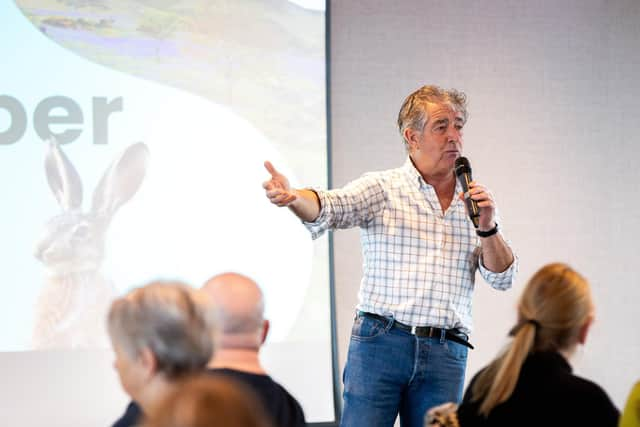The housing crisis won’t be tackled unless we build on the green belt - Bartek Staniszewski
When even Natural England admits that the green belt is not sacrosanct, we need to face up to the reality that we stand to gain much more than we might lose from developing on it.
Tony Juniper’s comment comes only five months after the Tories decried Lisa Nandy – then Labour’s shadow housing minister – for wanting to “concrete over our Green Belt” when she made a similar suggestion.
Advertisement
Hide AdAdvertisement
Hide AdIndeed, it also comes only two months after a row concerning some 160,000 new homes being held up by Natural England’s advice concerning water pollution. In light of this, Natural England now endorsing more housebuilding may seem surprising, but, upon careful inspection, it is clear that the green belt often does little for the English environment.


The green belt has expanded in size significantly since it was first introduced in 1979. Back then, it comprised around 5 per cent of England’s land area.
Subsequently, it has expanded to around 13 per cent today. This makes it far bigger than all of England’s developed land put together: that only comprises under 9 per cent of English land.
As such, releasing only a small proportion of the green belt for development could pave the way for millions of homes.
Advertisement
Hide AdAdvertisement
Hide AdMuch of this development would not only not impair England’s green and pleasant land, but actually improve its biodiversity. One recent green belt development resulted in a 131 per cent biodiversity net gain in the local area. This is not an exception to the rule.
About an eighth of the green belt is scrubland, with negligible biodiversity benefits, and over half of it is being used for intensive farming, which actively harms local biodiversity. At the same time, the areas enveloped by the green belt are some of the most expensive in this country. London, Oxford, Cambridge and Bristol are all surrounded by a green belt far larger than the cities themselves, and all four feature in the top five most expensive cities in the UK. In each one of them, the average home costs over 11 times more than the average yearly salary.
This is not a coincidence. The reason homes are so expensive there is because of the lack of land to build on. Land is usually around two-thirds of the value of a residential property, and this ratio is likely to be higher in areas where land that can be developed on is in short supply – that is, in areas enclosed by the green belt, functioning like a boa constrictor choking a suffocating housing market.
Releasing more land to be developed would greatly reduce all local house prices, as well as provide millions more homes for those living or seeking to live there. According to a 2019 study by the Centre for Cities, the green belt land that is within walking distance of train stations alone could provide enough space for as many as 2.3 million homes in some of the country’s most in-demand, unaffordable areas.
Advertisement
Hide AdAdvertisement
Hide AdBut we should go even further. Our current housing backlog, numbering 4.3 million homes, could be entirely cleared if we released only 8 per cent of the green belt for development. Even after this, the green belt would still comprise over 11 per cent of England’s land area, and total area protected against development - which includes also National Parks and Areas of Outstanding Natural Beauty - would amount to well over a third of all English land.
For over a century, there has not been a greater need to build more houses than there is now. The last time UK homes were this unaffordable was in 1876.
As a result of this, for most of today’s young people, owning a home will never be a real possibility. Those who can rent or stay with their family can bite the bullet, but that is not the case for over a quarter of a million homeless people we have in the UK today – people priced out of having a decent place to live.
Building on the green belt does not mean concreting over flowerbeds and meadows. On the contrary, even if we built on the green belt’s scrubland alone, we would have more than enough land to patch up this country’s entire housing deficit and more.
Advertisement
Hide AdAdvertisement
Hide AdThe cost and unavailability of land is the single biggest problem contributing to this country’s housing crisis, but the way to fix it is simple.
We need to be honest about what the green belt is. Much of it is scrubland, located near train stations and near some of this country’s most unaffordable areas. Unlocking it for development is common sense.
Unless this common sense is shown, we will never be able to successfully tackle the housing crisis.
Bartek Staniszewski is a senior researcher at think tank Bright Blue.